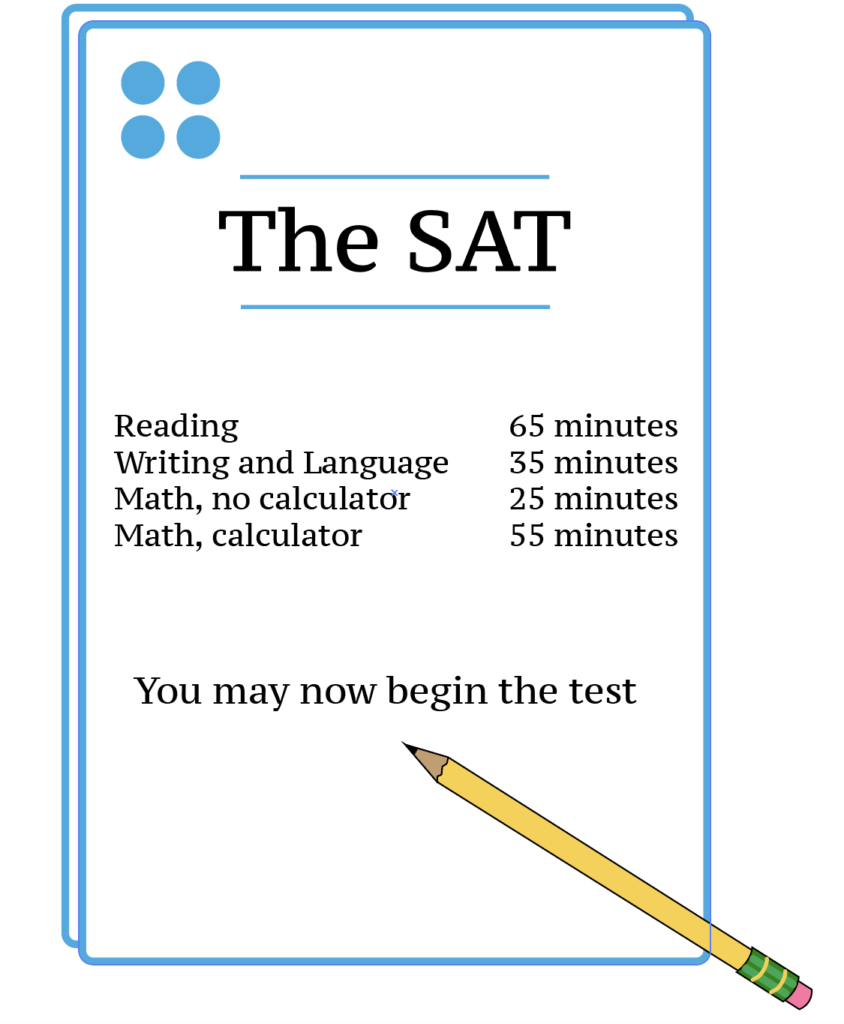Kavya’s Experience:
As I dragged my feet into my summer SAT prep academy (whose name I’m choosing not to divulge), I looked upon the wall with a list of all the participants’ names and searched for my name. Next to my name, I spotted the number 2. Confused as to why some of us needed to be separated from others, I trudged into the next room designated for number 2s.
I soon learned the room was meant for the students who scored lower on their first diagnostic test. Naturally, this came as a huge blow to our self-esteem.
Though my teacher was humorous and the classes were helpful, I couldn’t help but wonder if maybe I could’ve just learned everything on my own — and without the trauma to my ego. The summer program cost $1450, so there was a lot of pressure to learn the most from the experience.
Equally daunting was that the atmosphere felt really competitive: Many students from all over the Bay Area were learning at the same place and time while trying so hard to get scores that sometimes felt unattainable. When the scores were posted, I’d find myself comparing mine to others — sometimes not favorably.
Additionally, the entire idea of splitting us up was pointless: When I talked to one of my friends in the other class, we realized there was absolutely no difference in the material our teacher taught between the split groups.
Even with all of these criticisms, the class wasn’t all bad: I improved by around 80 points with each practice test we took every week, so admittedly, it was effective, even if the academy’s ways of doing so were humiliating and slightly hurtful.
Neal’s Experience:
Rather than a local, in-person SAT class, I participated in an online course based in Colorado, which was $750. This meant I had to wake up at 6 a.m. It didn’t seem too bad until one day, I fell asleep in class and woke up to my name being called after everyone else had already left the meeting — alas, they were my own pitfalls.
Unlike Covid-era schooling, the online nature of the class did not mean less work. Stacks of completed tests were constantly scattered across my room — my cabinet, desk or sprawled all over my bed. Every week, I would do at least one full test and usually some supplemental practice.
Whether it was going through every one of my answers or doing an unnecessarily long worksheet on idioms, it was a grueling process that I would not wish on my most hated nemesis.
As much as I disliked it at the time, the preparation was a huge help once I finally took the test: Remembering small details and learning how to use the process of elimination to narrow down my options aided me. The seemingly endless practice tests I took allowed me to speed through the English and math sections, with extra time to correct any mistakes. Even the worksheets full of boring history passages helped me focus on the important details.
The intense early-morning classes might have been painful to endure, but I’m feeling a level of confidence about the SAT that would not have been possible without them.
























